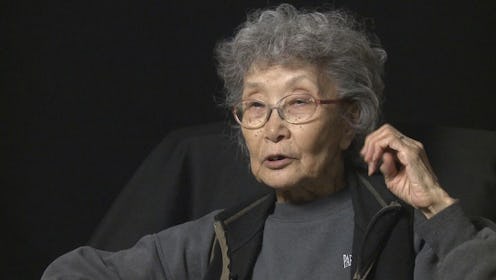News
11 Things You Should Know About Yuri Kochiyama

The world is mourning the loss of another gem. Yuri Kochiyama, a Japanese-American civil rights activist, died Sunday of natural causes in Berkeley, Calif at age 93. In a life that spanned World War II, the Black Freedom Movement, the passage of Roe v. Wade, and the election of President Barack Obama, Kochiyama always remained committed to fighting for justice and equality. Her extensive life's work is a testament to the power of perseverance. As we reflect on what she meant to generations of social justice warriors, it is important to recall why she matters so much.
Here are 11 things you should absolutely know about this amazing woman.
She survived internment
One of the darkest stains on America’s racial past was the “evacuation” of Japanese-American citizens during World War II. After the bombing of Pearl Harbor, more than 120,000 Japanese-Americans were imprisoned in various internment camps across the United States.
Kochiyama’s father was arrested for posing a potential threat to national security, and he died the day after his release. After her father’s death, Kochiyama’s family was transported to Camp Jerome in Arkansas. She, her mother, and her brother were then detained at Camp Jerome for three years.
then helped procure reparations for the victims of the World War II internment
Once she was released, Kochiyama worked tirelessly to ensure nothing like her experience would happen in America again. Yuri and her husband were instrumental in securing the Civil Liberties Act of 1988. The Act guaranteed a public apology from the U.S. government for erecting internment camps, and $20,000 in restitution to each living resident.
Love was central to her life
During her internment, Yuri met and fell in love with her husband, Bill Kochiyama. He was serving as a soldier in the Japanese-American 442nd Regimental Combat Team, and they were married in 1946. Their decision to relocate to New York and live in neighborhoods alongside other poor families bolstered their involvement in multiple social movements. Their marriage produced six children, nine grandchildren, four great-grandchildren, and a lifelong allegiance to fighting for justice.
She loved Malcolm X enough to disagree with him
Their friendship had begun with a simple handshake. In a 2002 interview with East Bay Express, Kochiyama said their first exchange occurred in Brooklyn, New York. She explained:
...Malcolm looked up and seemed to be looking right at me. He was probably wondering, 'Who is this old lady, and Asian at that.' I stepped forward and called out, 'Can I shake your hand?' He looked at me and demanded, 'What for?' I stammered back, 'I want to congratulate you.' And he asked, 'For what?' I was trying to think of what to say and said, 'For what you're doing for your people.' 'What's that?' he queried. 'For giving them direction.' He abruptly burst forth with that fantastic Malcolm smile and extended his hand. I grabbed it.
The interaction didn’t end there. She then challenged him.
“I admire what you’re doing,” she said. “But I disagree with some of your thoughts.”
“And what don’t you agree with?” Malcolm replied.
“Your harsh stand on integration,” she said.
And she was there when he died
LIFE Magazine produced one of the most famous photographs ever when they captured Kochiyama cradling Malcolm X as he lay dying at the Audubon Ballroom on Feb. 21, 1965. She told Democracy Now in 2008 that she was begging Malcolm not to die. "Please, Malcolm, please, Malcolm, stay alive," she said.
She recognized that all struggles for equality are interconnected
While Malcolm X was alive, Kochiyama was a member of his Organization of Afro-American Unity, and was organizing in Harlem around housing discrimination. After Malcolm’s death, Kochiyama continued her efforts against all forms of inequality. She was active in movements for Asian Americans; against the Vietnam War; and in the creation of ethnic studies departments in universities and others.
She staged multiple demonstrations in the 1970s, including a successful takeover of the Statue of Liberty to raise awareness for Puerto Rico's independence, which led to the release of five Puerto Rican political prisoners. Kochiyama founded the Asian Americans for Action group with the express purpose of organizing around issues relevant to the Asian-American and black American communities.
She made a documentary with THE Angela Davis
She was nominated for the Nobel Peace Prize
The “1,000 Women for the Nobel Peace Prize” group nominated Kochiyama for the Nobel Peace Prize in 2005.
Blue Scholars, a Seattle-based group, created a song in her honor
even Her biography is historic
Dr. Diane Fujino, the chair of the Asian-American Studies Department at the University of California, Santa Barbara, is the author of Heartbeat of Struggle: The Revolutionary Life of Yuri Kochiyama. The authorized biography is considered “the first U.S. biography of an Asian American woman activist.”
Sandra Oh is a fan
Listening to her read this speech is nothing short of inspiring.
We mourn the loss of Yuri Kochiyama, and celebrate her civil rights legacy.